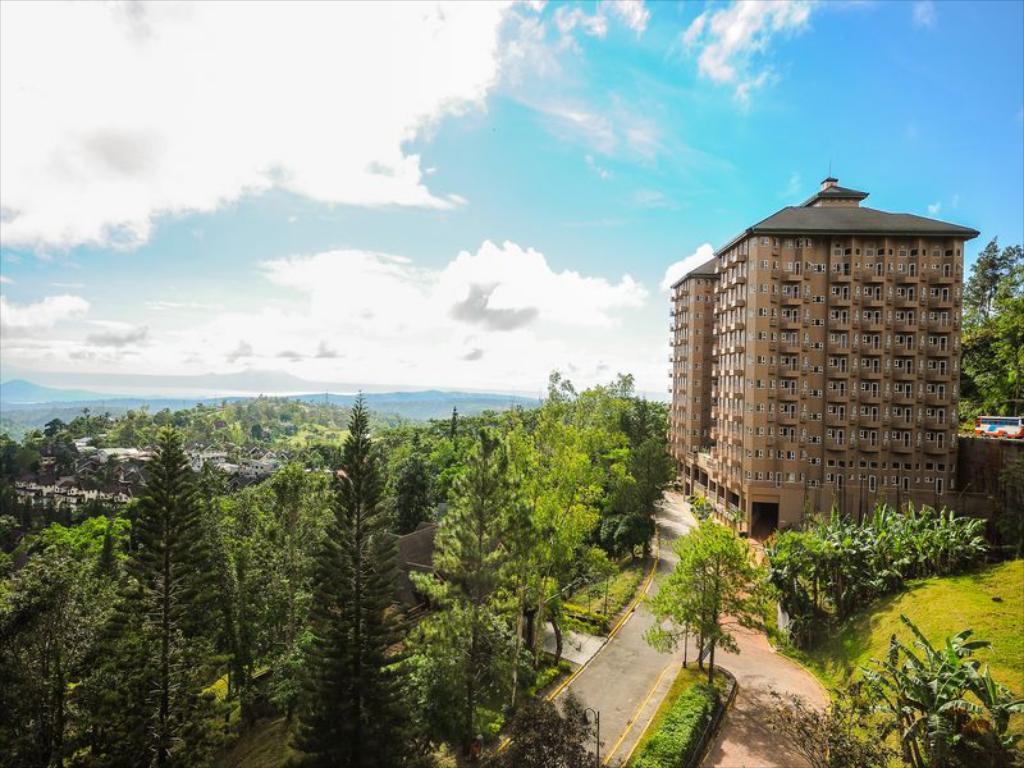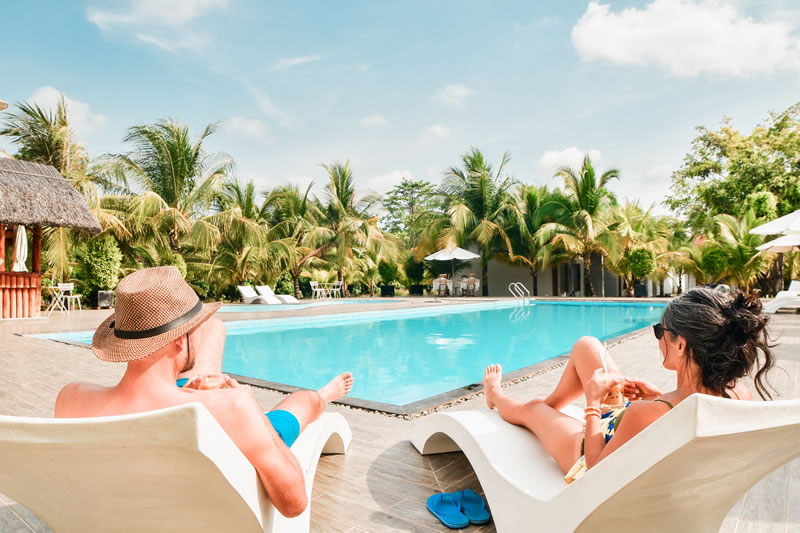Dreaming of retiring in a tropical paradise where you can enjoy a laid-back lifestyle, warm weather, beautiful landscapes, and affordable living? The Philippines is quickly becoming one of the most popular retirement destinations for people looking to live out their golden years.
Whether you’re seeking an active lifestyle, a peaceful retreat, or simply a place to enjoy the beauty of nature, the Philippines offers a wide array of retirement villages and homes that can cater to all your needs. Make sure you apply to the right retirement visa to the Philippines.
Health Insurance Made for Expats 🌍
Not all travel insurance fits different travel lifestyles - but SafetyWing offers coverage that works whether you're you're on a short trip or settling overseas.
✔ Buy even after you've left home
🌐 Global coverage
🕒 24/7 human support
🧾 Easy, straightforward claims process
Check out SafetyWing Website for more details
🩺 Choose the right plan for your journey:
Essential Plan – Ideal for short- to mid-term travelers. Covers unexpected medical treatments, hospitalization, and travel-related risks.
Complete Plan – Designed for long-term living abroad. Includes routine checkups, mental health support, cancer screening and treatment — plus everything in the Essential Plan. Learn more about Complete Plan
Stay safe, wherever you go.
From stunning beachfront properties to serene highland towns, this guide will take you through some of the best retirement destinations in the Philippines. Read on to discover why the Philippines is the perfect place for retirees looking to continue working remotely after 40 or simply enjoy their retirement in a safe, vibrant, and affordable setting.
Best Retirement Villages in the Philippines

Retirement villages in the Philippines are specially designed communities where seniors can enjoy independent living while also having access to on-site healthcare services, recreational activities, and a strong sense of community. Here’s a look at some of the best luxury resorts options in the country:
1. Dumaguete, Negros Oriental
Dumaguete is often called the “City of Gentle People” due to its laid-back vibe and friendly locals. Located in the central Philippines on Negros Island, Dumaguete offers an affordable cost of living and a mix of natural beauty and cultural heritage.
- Why Retire Here? Dumaguete is a popular choice for retirees due to its laid-back lifestyle, low cost of living, and access to healthcare. The city boasts a growing expat community, with lots of activities and scenic beauty, making it ideal for those looking to retire peacefully yet stay connected to a vibrant community.
- Personal Note: Dumaguete holds a special place in my heart for its welcoming people and relaxed lifestyle. I’ve visited here a few times, and it’s impossible not to feel at home. The picturesque seafront and vibrant expat community make it a perfect haven for those looking to slow down but still have plenty of things to enjoy.
2. Tagaytay, Cavite
Situated just two hours south of Manila, Tagaytay offers cooler weather and panoramic views of Taal Volcano. The area is a popular retirement destination due to its peaceful environment and proximity to the bustling capital city.

- Why Retire Here? With its cooler climate, scenic landscapes, and easy access to Manila’s urban amenities, Tagaytay offers retirees the best of both worlds. It’s perfect for those looking for a tranquil lifestyle with access to modern facilities and healthcare.
- Personal Note: Tagaytay has always been a place I visit to escape the heat of Manila. The cool weather and breathtaking views make it feel like an eternal vacation. It’s a wonderful choice if you want a blend of quiet living and easy access to city amenities.
3. Cebu City

Cebu is one of the Philippines’ most vibrant and rapidly developing cities. It offers the perfect blend of city living and natural beauty, making it an ideal choice for retirees who want the comforts of urban living but also access to beaches and cultural attractions.
- Why Retire Here? Cebu offers world-class healthcare, a thriving expat community, and a wide range of activities. With easy access to nearby islands and great infrastructure, retirees can enjoy a dynamic lifestyle while still living affordably.
- Personal Note: I’ve spent a good amount of time in Cebu, and there’s something special about the way the city balances modernity with nature. The beaches are just a short drive away, and the dining and shopping experiences are top-notch. It’s the perfect location for those who want everything at their fingertips.
4. Baguio City
Located in the mountains of Luzon, Baguio is known for its cooler climate, beautiful gardens, and lush pine forests. It has long been a popular spot for locals and retirees seeking respite from the tropical heat.

- Why Retire Here? Baguio is perfect for those who enjoy cooler weather, fresh air, and natural surroundings. It’s also rich in culture, offering a peaceful yet vibrant atmosphere with a well-established infrastructure.
- Personal Note: Baguio is a favorite of mine because it feels like a sanctuary away from the hustle of Manila. I love the cool air, the pine tree-filled landscape, and the artsy vibe. The best part is being able to explore the famous markets and enjoy the endless festivals throughout the year.
5. Iloilo City
Iloilo is an up-and-coming city in the Visayas region, known for its cleanliness, modern facilities, and low cost of living. It’s perfect for retirees who want to live in a safe, progressive city surrounded by beautiful landscapes.
- Why Retire Here? With its affordable lifestyle, modern amenities, and easy access to scenic spots, Iloilo offers retirees a high quality of life without the high costs of living in bigger cities.
- Personal Note: Iloilo has an old-world charm that’s paired perfectly with modern conveniences. During my visits, I found the food culture to be a highlight—especially the famous La Paz batchoy soup! It’s a great place for retirees looking to settle somewhere peaceful, with a welcoming vibe and a strong local culture.
Retirement Homes in the Philippines
For retirees who require more specialized care, retirement homes (sometimes referred to as assisted living or nursing homes) in the Philippines provide a high level of medical support and help with daily tasks. These homes are ideal for seniors who need extra care, whether it’s assistance with personal tasks, medication management, or ongoing health monitoring.
What is a Retirement Home?
Retirement homes in the Philippines are facilities that provide 24/7 care for seniors. These homes cater to retirees who may need help with activities of daily living, including personal hygiene, mobility, and medication. In addition to medical care, these homes often offer social activities, meals, and housekeeping services.
- Features of a Retirement Home:
- 24/7 Care: Professional nursing staff available around the clock.
- Medical Assistance: On-site doctors or partnerships with nearby hospitals.
- Social Engagement: Group activities, exercise programs, and entertainment.
- Comfortable Living Spaces: Private or shared rooms, with common dining and recreational areas.
- 24/7 Care: Professional nursing staff available around the clock.
1. RainTree Care, Manila
RainTree Care in Manila is a leading facility offering assisted living and memory care services. Located in the heart of Metro Manila, it provides personalized care with medical professionals on-site and a range of amenities, including therapy services, social programs, and recreational activities.
- Why Choose This Home? RainTree Care’s focus on well-being, combined with its proximity to top hospitals and shopping centers, makes it an ideal choice for retirees who need assisted living services in a modern, urban setting.
- Personal Note: Manila can feel overwhelming, but RainTree Care offers a calm, professional environment with excellent medical support. I’ve been impressed by the level of care they offer and how they ensure each resident feels like part of a family.
2. Carewell Health Systems, Quezon City
Located in Quezon City, Carewell Health Systems offers a range of care services, including skilled nursing, physical therapy, and 24/7 assistance for seniors. The facility provides private rooms, meals, and regular health check-ups for all residents.
- Why Choose This Home? Carewell offers comprehensive care in a convenient location with easy access to Manila’s amenities. It’s an excellent choice for retirees who want to be close to hospitals and other essential services.
- Personal Note: Carewell stands out because of its reputation for compassionate care. The staff is always willing to go the extra mile to ensure each resident’s comfort. For retirees who need more hands-on support, this facility feels like a great choice.
Why Are These Retirement Options Ideal for You?
The Philippines offers an ideal environment for retirees—whether you’re looking for a vibrant village to engage with a community or a specialized retirement home that provides medical care. Here’s why:
- Affordability: The Philippines is one of the most affordable retirement destinations in Asia. With a low cost of living, retirees can enjoy a high standard of living without spending a fortune.
- Access to Healthcare: Both retirement villages and homes in the Philippines offer easy access to healthcare facilities, ensuring that retirees can receive the medical care they need when necessary.
- Beautiful Locations: Whether it’s beaches, mountains, or urban areas, the Philippines offers a variety of scenic environments that are perfect for those looking to retire in paradise.
- Community & Support: Retirement villages provide a strong sense of community and social engagement, while retirement homes ensure that those with more specialized needs receive the care and attention they deserve.
Final Thoughts:
Whether you’re drawn to the cool mountain air of Baguio, the tropical beauty of Dumaguete, or the urban vibrance of Cebu, the Philippines offers diverse retirement options to suit different preferences and needs. From retirement villages with a sense of community to specialized retirement homes offering medical support, there’s something for everyone.
If you’re considering retiring in the Philippines, now is the perfect time to explore the many options available to ensure your retirement years are spent in paradise. You can also to become a digital nomad in the Philippines and continue to earn passive income as a remote worker.





